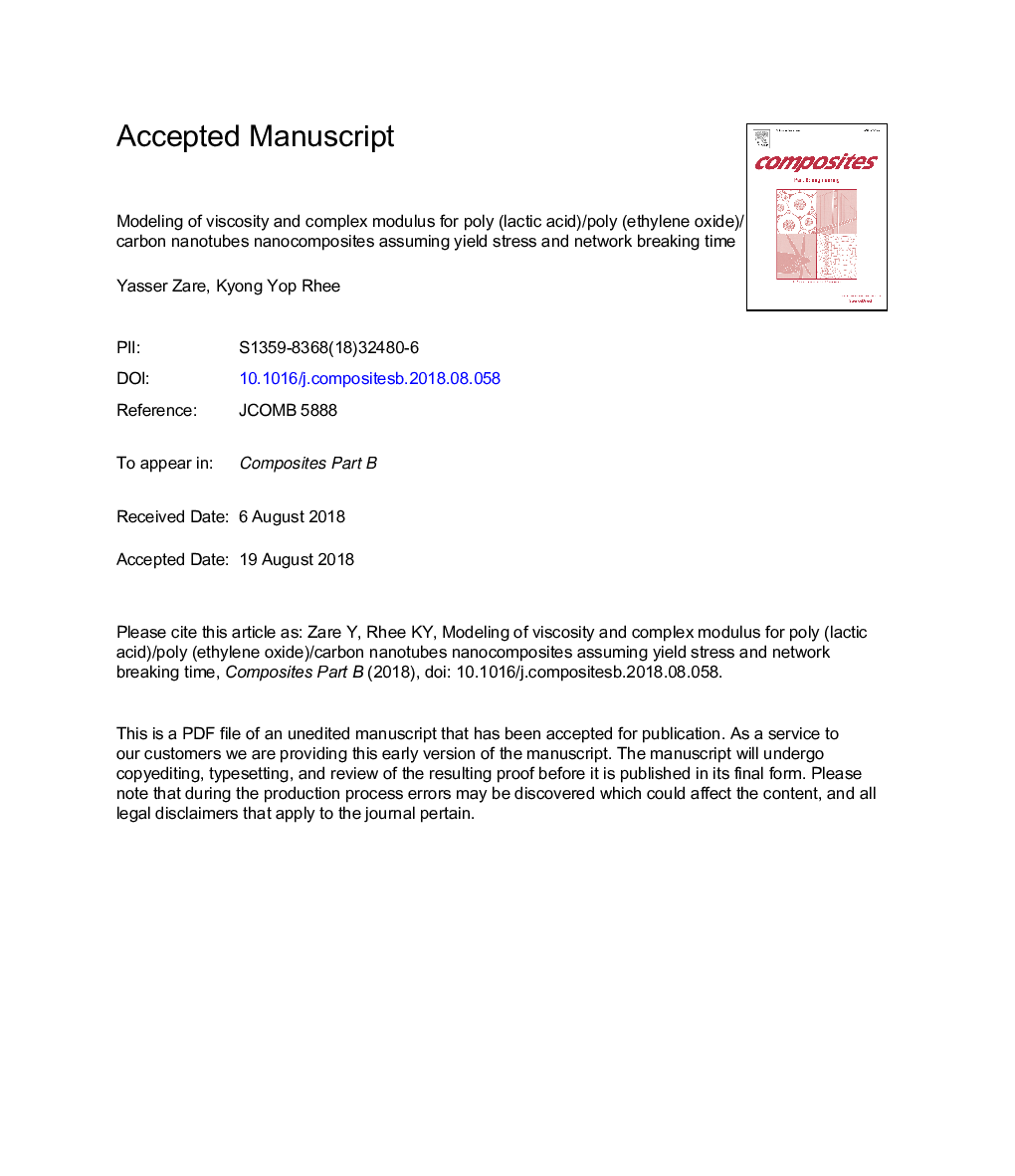| Article ID | Journal | Published Year | Pages | File Type |
|---|---|---|---|---|
| 8947727 | Composites Part B: Engineering | 2019 | 27 Pages |
Abstract
In this paper, the blends and nanocomposites containing poly (lactic acid) (PLA), poly (ethylene oxide) (PEO) and carbon nanotubes (CNT) are prepared and the viscosity of samples is measured at different frequency ranges. After that, a suitable model proposed by Zhu group is applied to predict the viscosity and the viscoelastic parameters of prepared samples. Moreover, this model is developed to suggest the complex modulus as a function of zero viscosity, yield stress, relaxation time and network breaking time. The roles of different parameters in the viscosity and complex modulus are clarified to justify the suggested models. All predictions show good agreements with experimental data at all frequency ranges. The addition of CNT to blend increases the zero viscosity, yield stress, relaxation time and network breaking time. The zero viscosity directly handles the viscosity, but the role of relaxation time in the viscosity depends on the extents of other parameter. Moreover, the low values of yield stress and network breaking time reduce the viscosity, whereas only high yield stress is enough to improve the viscosity. Additionally, high zero viscosity, high yield stress and short relaxation time grow the complex modulus of polymer systems.
Related Topics
Physical Sciences and Engineering
Engineering
Engineering (General)
Authors
Yasser Zare, Kyong Yop Rhee,
